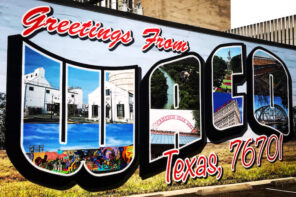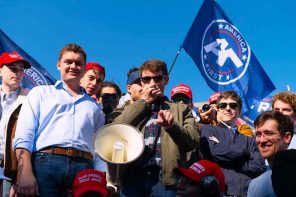It might be hard for some of us to imagine a grown man allowing himself to be blindfolded, led into a darkened room, threatened and ritually attacked by three men wearing aprons, pulled to the floor, and left there with a cloth over his head for an hour or more before he is allowed to see light again. It might be even harder to imagine Ben Franklin submitting to these indignities. Or George Washington. Or Theodore or Franklin Roosevelt.
But all of them did, along with eleven other presidents, and a great many of the leading politicians, generals, artists, and scientists of this country and several others. And some of them have done even more outlandish things as part of their commitment to Freemasonry. Perhaps because Masonry and its legends are already so bizarre, Dan Brown hardly needs to make anything up in his depiction of the fraternity in his new novel, The Lost Symbol.
Although they plunder art, history, and religion for subject matter, everyone knows that Brown’s books don’t rise very far above the grocery-store checkout aisle. Nevertheless, his ambition outstretches any run-of-the-mill author of cheap thrillers. For better or worse, after two runaway bestsellers that claim to upend the traditional story of Christianity, he has become America’s most important pop philosopher and historian. In the earlier books, he hatched a version of the faith that spoke to many people in ways that churches no longer seem able to. Now, by turning to Freemasonry in The Lost Symbol, he exposes the deep stratum of mystical thinking that underlies modern rationalism. However naive the novel may be, it testifies to the myths that helped to make the modern world, myths in which Brown places zealous faith. In so doing, it reads like a love letter to Masonry.
Brown takes to heart the adage that truth is stranger than fiction, like the reverse of a lousy historian: rather than finding himself bored by dry, ordinary facts and spicing them up with distortions and flights of fancy, he takes shallow, hackneyed fiction and makes it exciting by adding in the truth. Along the way, he can’t resist including some of the Masons’ absurd legends surrounding their supposed origins, and so allows fact, fiction, and myth to blend into a heady mixture.
The book reflects not the fear and suspicion often directed towards the Masonic mysteries but rather the continuing strength of the mindset—the mix of hope and terror surrounding the advance of human knowledge—that gave rise to the Masons in the first place and that set the stage for the modern imagination.
Freemasonry first arose out of the craftsmen’s guilds of stonemasons in late medieval Britain. Like most artisans, men who built in stone wanted to limit their craft to those who had been properly trained, and so created a guild with a system of secret words and signs by which master craftsmen could identify one another. Masons were mobile, traveling long distances to the building sites of castles and cathedrals. They were detached from ordinary medieval society and regarded with suspicion by townspeople. Thus, the makeshift “lodges” where masons worked (and sometimes lived) at building sites became home to a subculture, an alternate world with its own ethics, lore, and customs. Their legends centered on the building of Solomon’s Temple, giving them a special connection to God and to the world of the Bible.
Later, in the seventeenth century, particularly in Scotland, the organization began to expand beyond its medieval foundation. Men who were not actually stonemasons, including other artisans, affluent gentlemen, and those with philosophical and scientific interests, started to join the lodges, drawn by their social conviviality and their traditions of ritual and secrecy. This custom of including non-stonemasons in the lodges, called “speculative Freemasonry,” spread from Scotland to England, and then took off as an international movement. Masonic initiations included some amount of mild ritual hazing, intended to disorient the initiate and prepare him for entry into a new social and spiritual realm; in the 1600s and 1700s, these rituals created a buzz of fear and suspicion around the Masons, which only added to their popularity.
Masonic lodges proliferated in America from the 1720s onward. They were a religious movement as well as a social networking sensation, a pre-electronic Facebook. At first they recruited only affluent gentlemen and professionals, then later a broader array of middle-class farmers and craftsmen, like the Boston silversmith Paul Revere. Their ceremonies celebrated the ability of the human mind to take control over the body and the physical world, and so to ascend toward God—even to become god-like. Masons were encouraged to build confidence in their own intellects, and to form new commercial, religious, and educational institutions. The lodges also acted as little schools of government, training new, local elites in elections and legislative procedures. The influence of Masonry was part of the process that democratized and liberalized Europe and North America through a wave of revolutions. The Masonic faith laid the foundations for modern ideology: belief in each person’s and each nation’s right to run their own affairs, in the unlimited power of the human intellect, in the continuing forward march of history, and in the boundless ability of science to solve the mysteries of the universe. In the lodges, these beliefs went hand in hand with occult signs and rituals.
Drinking Wine from a Skull
The Lost Symbol’s premise is as formulaic as it is thrilling. The handsome and personality-free hero Robert Langdon, a professor of “symbology” at Harvard, must try to rescue a friend in danger: his mentor and confidant, the rich and powerful Peter Solomon. The mysterious kidnapper isn’t interested in money, though. He’s after secret knowledge that Solomon possesses as a high-ranking Mason. The villain forces him to admit that there is a secret Masonic pyramid containing ancient wisdom somewhere in Washington, DC, and then compels Langdon to find it for him. All the while, we learn, the villain intends to kill Solomon’s scientist-sister and to destroy the lab where she is exploring the hidden powers of the human mind.
The busy plot provides plenty of opportunity for putting Masonic rituals and secrets on display. They begin right on the first page, when we are introduced to the villain, a muscular eunuch covered in Masonic tattoos who calls himself “Mal’akh.” As part of a Masonic initiation, Mal’akh drinks red wine from a human skull. Though Mal’akh supposedly joins the thirty-third degree of the Scottish Rite, this act is in fact part of the initiation into the Knights Templar degree of the York Rite branch of Freemasonry, dating back to around 1790. Although some American Masons undergo the Knights Templar initiation ceremony, most do not; it is part of a system of “higher degrees,” a later development that certain Masons added onto the society’s original structure. We may forgive Brown these inconsistencies, though, since he at least presents us with a real Masonic ceremony.
Considering that Dan Brown’s last two books offer a paranoid conspiracy theorist’s tour of Catholicism, with secret orgiastic cults and terrorist plots involving anti-matter bombs, there’s little reason to expect his latest work to be factually reliable. Perhaps it shouldn’t need to be, except for Brown’s prefatory note claiming that “all organizations in this novel exist,” and “all rituals, science, artwork, and monuments in this novel are real.” As a student of Freemasonry, I can vouch that Brown’s claim is generally true. The strange rituals and traditions that the novel attributes to the Masons are all in fact practiced by some branch of Masonry.
Dan Brown is able to work so comfortably with real Masonic symbols and lore because they resonate with his own sensibility. Not only do Brown and the Masons both love secrets and encoded symbols, but they believe that all of it must surely add up to some single great truth. It is a worldview that flourished in the Enlightenment, in which occult science and a deep sense of mystery surrounded the rise of modern rationalism. What today might appear to be a contradiction between reason and occult mysticism was once a natural relationship, and no other movement illustrates this marriage so fully as the Masons.
Ceremonial Aprons and Pseudoscience
At the beginning of the world, many medieval and Renaissance scholars believed, mankind once shared in divine knowledge and power. The memory of this godly state has been gradually diminished and debased, and has to be reconstructed. This was the justification for the bizarre tinkerings of alchemists, astrologers, and angel-communicators. The early speculative Masons brought this quest to recover primal knowledge with them into the lodges; the English antiquarian William Stukeley said that he joined Masonry because he believed it possessed “the remains of the mysterys of the ancients.” Robert Langdon, too, tells us early on that we are in fact looking for “the ancient mysteries.”
Who, though, are these “ancients”? Masonic lore has always laid claim to secrets from the misty past, but there is confusion as to whether they came from ancient Egypt, Judea, Persia, Greece, or even from the Druids. It doesn’t really matter—the ancient mysteries have always served the same purpose in the Masons’ cherished myth that modern science and human ingenuity will recover the lost wisdom of the ancients. In this way, the future will unite with the distant past; the very beginning and the very end of history will link together in a timeless circle. In this scheme, the Middle Ages are necessarily the low point of history, which the ancient knowledge only barely survived in order to be recovered by the moderns. This is the narrative at the heart of modernity, shaping our contemporary world in ways that are often forgotten. In it, the contradiction between rationalism and mysticism is reconciled. And Dan Brown has become its latter-day defender, its Don Quixote.
This myth goes hand in hand with a passion for pseudoscience. Masons wear ceremonial aprons decked with alchemical symbols and lay cornerstones on dates chosen for their astrological auspiciousness. In the eighteenth century, Freemasonry overlapped heavily with “Mesmerism,” the secretive movement that claimed to harness the power of humans’ “animal magnetism.” Of course, many prominent Masons in that period were scientists, including chemists, astronomers, and physicists; nevertheless, they saw what we would call real science as continuous with pseudoscience—chemistry was compatible with alchemy, astronomy with astrology, physics with occult magic. Mason-scientists, Ben Franklin among them, were obsessed with fire and electricity—the two sources of light on Earth, which held a mystical significance for them. Franklin’s experiment with the kite in the lightning storm was part of a larger quest to comprehend the mystical power of light.
Dan Brown, too, cannot resist the allure of pseudoscience. As in Angels and Demons, The Lost Symbol pairs Langdon with a heroine well-versed in phony science. In the earlier book, Vittoria worked in “bio-entanglement.” In The Lost Symbol, Katherine Solomon is a practitioner of “noetic science”—the study of the human mind’s hidden powers. Whereas light and electricity, the obsessions of the 1700s, are old news, consciousness is both mysterious and trendy. Noetic science is a real field, at least insofar as there is really an Institute of Noetic Sciences in Petaluma, California. As their Web site explains, the Institute “explores the frontiers of consciousness” to “build bridges between science and spirit,” and “research subtle energies.”
Such baloney works wonders for middle-class self-absorption, and for Brown it serves as a useful device. By merging mind and matter, it allows Brown, through Katherine Solomon, to construct his own “missing link between modern science and ancient mysticism.”
Part of the appeal of Brown’s books is the hint that there is some profound reality underlying all of the cheap fun. Beneath the nonsensical lore and pseudoscience of The Lost Symbol is a sincere sense of hope. The narrator tells us that in the hours after the September 11 attacks, the random-event-generators in noetic scientists’ labs behaved unusually; “as the frightened world came together and focused in shared grief,” the machines’ random outputs became orderly and patterned—proof that the shared “cosmic consciousness” of the human race could change the physical world. The fantasy is not much different from that of the David Lynch Foundation for Consciousness-Based Education and World Peace, whose spokesmen use elaborate brain-scanning monitors and claim that if “the square root of one percent” of the world’s population transcendentally meditated at once, world peace would be achieved. In the same way, philosophers in the 1600s fell for the Rosicrucian texts—a series of manifestos issued by a supposed alchemical secret society that would soon overthrow the world order and establish an age of peace and enlightenment. The Lost Symbol reminds us of what most skeptical critics of pseudoscience fail to recognize—that it is often not just a scam, but an expression of longing. It is millenarian and utopian; pseudoscientific quackery lends the appearance of science to what is often in fact a quest for social harmony and healing.
Reviving the Myth
The information that Brown feeds us about real-world people and places is, as I have said, mostly accurate. There are some historical mistakes and exaggerations, of course. He labels various scientists, from Paracelsus to Newton, as “Rosicrucians,” when in fact some of them predated Rosicrucianism or at best only read a few Rosicrucian texts. Though he says “more than half” of the framers of the US Constitution were Masons, in fact around a quarter of them were. Brown also has Robert Langdon defend the Masons’ own claim that their fraternity is not a religion, since they do not promise salvation, believe in a set theology, or convert nonbelievers. The argument is hogwash. The Masons’ ritual and lore do present a distinctive theology, and while they do not assure salvation or convert nonbelievers, many religions, such as Judaism, also do not do these things. Masons may have practical motives for denying that their organization is a religion, but it’s hard to know what else to call it.
Such misrepresentations of Freemasonry tend to reinforce the organization’s self-image as a benevolent and admirable society—powerful, yet harmless, like a friendly giant. Brown stresses their inclusiveness and tolerance, even to the point of fallacy. At one point Langdon is rescued by an African-American man who is a thirty-third degree Mason of the Scottish Rite and a lodge brother of Peter Solomon, which is highly unlikely. American Freemasonry, including the Scottish Rite, has always been unofficially segregated. In the 1780s, Prince Hall, a black Bostonian, was initiated by some Irish soldiers. The white lodges in Boston refused to accept him, so he formed his own black Masonic lodge, which gave rise to a separate “Prince Hall” branch of Masonry for African-Americans. In the world of The Lost Symbol, however, these real-world limitations are forgotten in the bright light of Masonic virtue.
In 1738, London’s Grand Lodge printed a letter they had received from a Mason who called himself “Brother Euclid.” The brother decried the “gross ignorance and impotent malice” of those who attacked the Masons for their secret rites. “Have not People in former Ages, as well as now,” he asked, “alleged that the Free Masons in their Lodges raise the Devil in a Circle?” Dan Brown takes a welcome leap beyond this tradition of ignorance and malice, giving the Masons a fairly accurate and highly sympathetic treatment in The Lost Symbol. It may be that he instinctively sympathizes with the maligned and the misunderstood, or that he needs to maintain friendly relations with Masonic lodges to research his next book. Fundamentally, however, Dan Brown shares with the Masons a belief in the mythology that gave rise to modern culture, and hopes that his readers will join him in affirming those myths once again.
_______________
This article first appeared as Modernity’s Fraternity at Killing the Buddha




